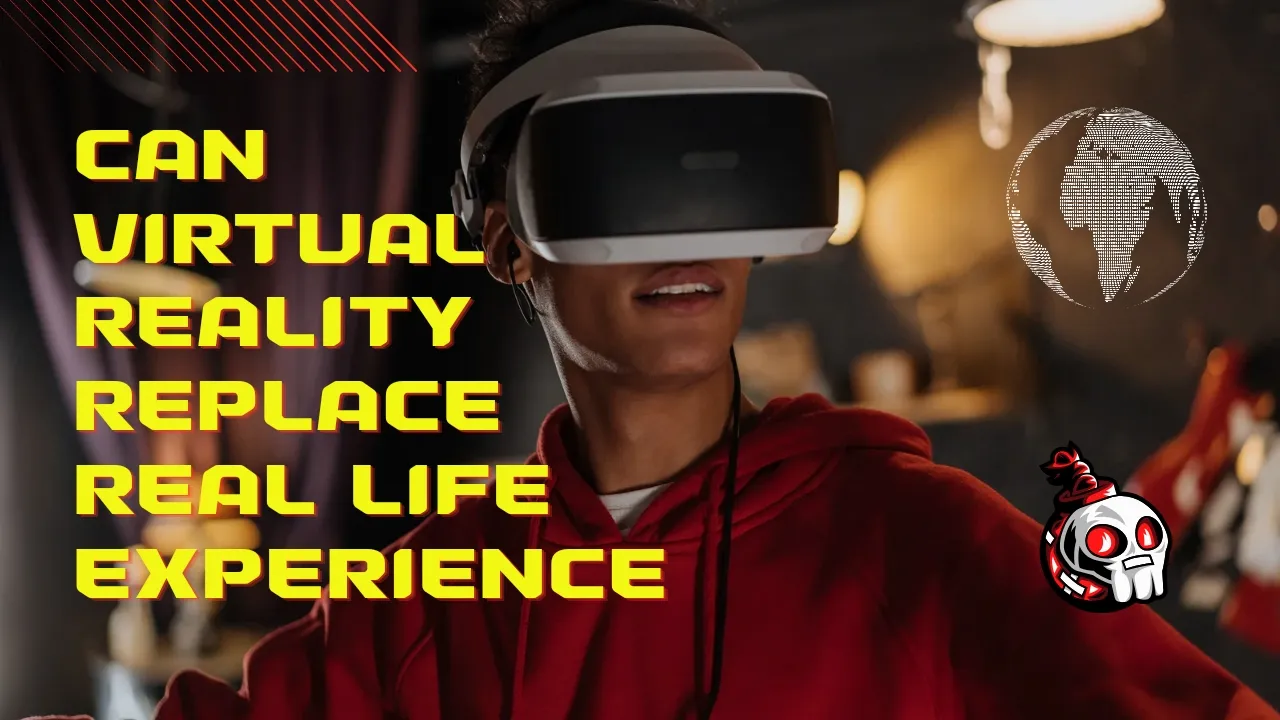Are you wondering that can virtual reality replace real life experience? Then you at the right place. With super immersive virtual reality (VR) experiences becoming more accessible, a debate has come out can virtual worlds replace real-life experiences?
Well, In this article we will explore the unpack reality from fiction regarding VR’s potentials and limitations.
What is Virtual Reality ?
Before we jump into VR’s feasibility as alternative to real-world experiences, let’s quickly recap what virtual reality is at its core
- Immersive simulations – VR uses stereoscopic 3D visuals, directional audio, haptics and sensors to simulate digitally created environments and situations that users can interact with in realistic ways.
- Sensory depth – The combination of responsive visuals, sound and touch creates a strong sense of presence and immersion for users suspended from physical surroundings.
- Interaction – Users can explore settings, manipulate objects, communicate with characters using gaze detection, gestures and movement allowing active participation rather than passive observation.
So in a nutshell, VR uses digital technologies to deliver heightened reality simulations that aim to make users feel present in experiences distinct from the real world. Cool so far? Now let’s analyze if VR can become a viable alternative to real life.
VR Potential – Environments Where It May Complement or Supplant Reality
Here are some settings where experts see strong potential for VR to match or improve upon real experiences even as the technology progresses.
Training Simulations
VR creates safe spaces to practice risky, expensive or inaccessible activities like flight piloting, surgeries or space missions. Trainees can repeatedly experience and improve skills.
Virtual Meetings and Events
Immersive shared VR spaces allow geographically dispersed people to interact, collaborate and attend events together without physical limitations or travel.
Gaming and Entertainment
VR unlocks unlimited environment possibilities for interactive fantasy gaming, theme park style adventures and story experiences surpassing physical entertainment venues.
Education and Learning
VR enables students to engage with realistic simulations of historical events, processes or phenomena first-hand that are unsafe, expensive or impossible in real classrooms.
Therapy and Rehabilitation
Customized VR simulations help treat phobias, PTSD and support motor rehabilitation through digitally controlled exposure therapy and exercises.
Limitations – Why VR May Not Replace Reality Completely
Despite rapid VR tech advancements, some fundamental constraints remain for replacing real-world experiences completely:
- No tactile feedback – Unable to digitally simulate texture, weight, solidity, temperature and full physical sensations.
- Limited mobility – Confined movement within rigged spaces unlike open physical mobility.
- Health risks – Nausea, dizziness, eye strain remain immersion-breaking challenges.
- Behavioral fidelity – People do not behave identically in virtual and real settings. Social inhibitions persist.
- Cost prohibitive – VR equipment, content development and computing infrastructure require high investment.
- Skill decay – Heavily simulating tasks may erode real-world skill effectiveness among practitioners.
Rating VR Feasibility By Experience Type
Based on unique user needs and experience objectives, VR may serve as a great alternative, partial substitute or weak replacement for reality…
| | Great Alternative | Partial Substitute | Poor Replacement |
|-|-|-|-|
| Gaming | Fantasy adventures, action sequences beyond real world | Longer gameplays with physical fatigue, motion sickness | Short smart phone games for quick entertainment |
| Training | Space, surgery, air combat simulations | Team exercises combining VR with physical drills | One-on-one mentoring, coaching interactions |
| Events | Virtual conferences with remote experts and attendees | Hybrid events with smaller physical venue | Intimate gatherings focused on social bonding |
| Shopping | Evaluating digital visualizations of furniture, clothing | Trying on watches, jewelry by overlaying on self | Feeling fabric textures and test driving vehicles |
| Tourism | Visiting inaccessible sites like Antarctica, space, sea bed | Guided museum tours with artifacts overlay | Adventure sports offering thrill and wide open spaces |
So in limited contexts, VR can offer comparable or better alternatives to reality based on user motivations and desired outcomes. But for more social, physical and skill building activities, VR still remains a partial or weak substitute.
Balancing Real and Virtual Worlds
Rather than an all-out replacement for reality, the prudent approach seems to be embracing VR as an enhancement providing digital options for specific needs unconstrained by physical limitations. Education, medicine and design are already leveraging VR responsibly in this manner.
Moderation is key. Overindulgence in simulated environments to escape real world issues requires mindfulness to avoid psychological pitfalls. VR will likely serve us best when balanced thoughtfully with holistic real-life experiences focused on human connections and all-round well-being.
Conclusion
So friends, realities unknown explored through VR can expand human possibilities but the therapies, wisdom and relationships of time-tested real-world remain indispensable. Hopefully as VR progresses, we can harness it in measured ways to enrich the human experience.
What are your thoughts on VR’s potentials and perils? Would be great to hear your perspectives in the comment section.
Frequently Asked Questions
Here are the some questions which comes in mind while understanding what virtual reality is.
What hardware is required for virtual reality?
Key components are headsets with stereo displays, spatial audio, sensors and controllers. High-end computing power and graphics enable complex VR environments.
Does VR completely isolate users from real world?
Not necessarily. Spatial cameras built into headsets allow pass-through of real surroundings along with alerts. Augmented overlays also integrate virtual elements with physical spaces.
Can group activities be done through virtual reality?
Yes, online multi-player VR spaces allow collaborative team activities by remotely immersed users. But human behavior may differ from real world group dynamics.
What are risks of spending too much time in VR?
Overuse risks include mental addiction to false reality, weakened real relationships, diminished physical health and abilities, losing grip from purposeful goals.
Which industries are using VR solutions?
Healthcare, aviation, education, engineering, design, gaming, real estate, military, tourism are actively developing enterprise VR applications.

